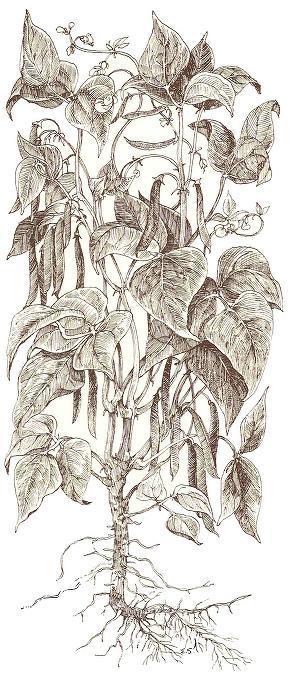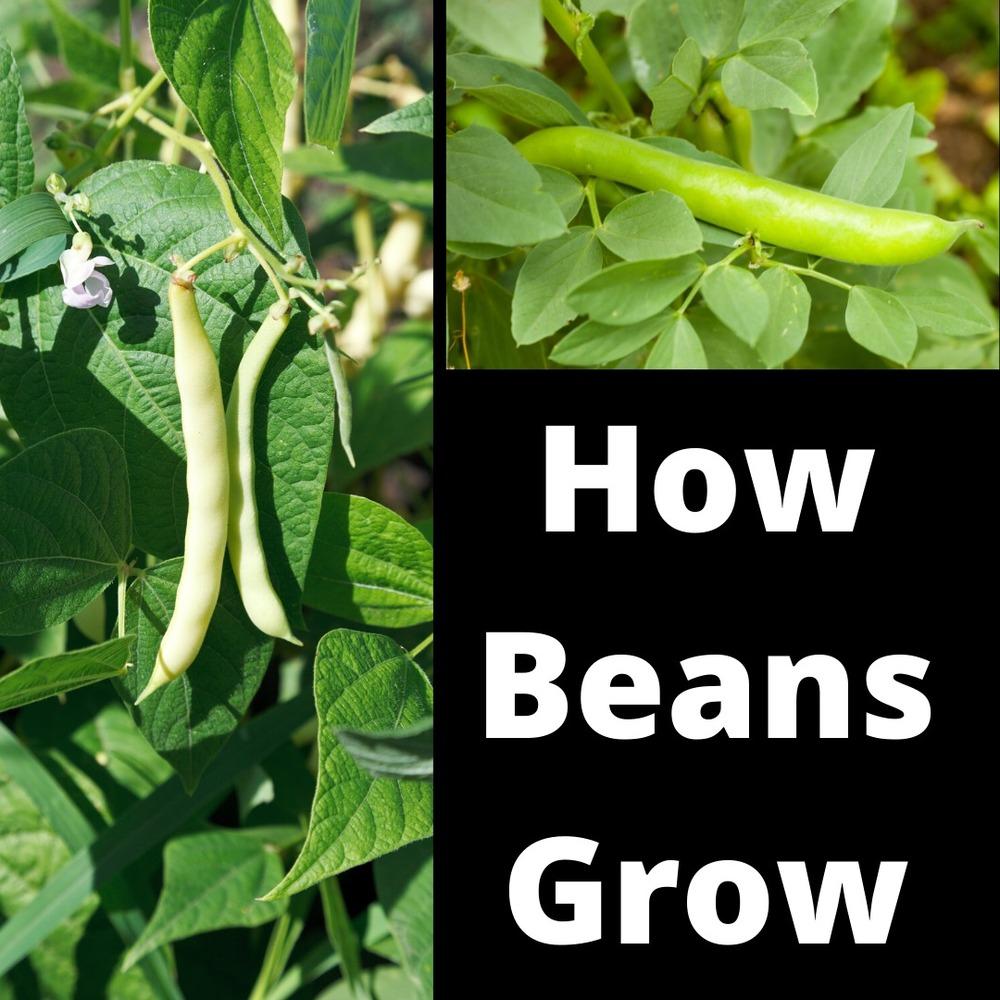 If you've ever walked by containers of bulk seed in a garden store, you may have been surprised by the many different colors, sizes and shapes of the beans -- even by the variety of designs on the seed coats and their descriptive names: 'Soldier', 'Wren's Egg', 'Yellow Eye', 'Black Eye', and others. Maybe you were impressed, too, with how big some of these seeds are. Underneath the large, hard seed coat is an embryo, a tiny plant ready to spring to life. When you plant a bean seed, the right amount of water, oxygen and a warm temperature (65°F to 75°F) will help it break through its seed coat and push its way up through the soil.
If you've ever walked by containers of bulk seed in a garden store, you may have been surprised by the many different colors, sizes and shapes of the beans -- even by the variety of designs on the seed coats and their descriptive names: 'Soldier', 'Wren's Egg', 'Yellow Eye', 'Black Eye', and others. Maybe you were impressed, too, with how big some of these seeds are. Underneath the large, hard seed coat is an embryo, a tiny plant ready to spring to life. When you plant a bean seed, the right amount of water, oxygen and a warm temperature (65°F to 75°F) will help it break through its seed coat and push its way up through the soil.
Most of the energy the young plant needs is stored within the seed. In fact, there's enough food to nourish bean plants until the first true leaves appear without using any fertilizer at all. As the tender, young beans come up, they must push pairs of folded seed leaves (or cotyledons) through the soil and spread them above the ground. Beans also quickly send down a tap root, the first of a network of roots that will anchor the plants as they grow. Most of the roots are in the top eight inches of soil, and many are quite close to the surface.
What Beans NeedBeans need plenty of sunlight to develop properly. If the plants are shaded for an extended part of the day, they'll be tall and weak. They'll be forced to stretch upward for more light, and they won't have the energy to produce as many beans. The bean plant produces nice, showy flowers, and within each one is everything that's necessary for pollination, fertilization and beans. Pollination of bean flowers doesn't require much outside assistance -- a bit of wind, the occasional visit from a bee, and the job is done. After fertilization occurs, the slender bean pods emerge and quickly expand. Once this happens, the harvest isn't far off. Although beans love sun, too much heat reduces production. Bean plants, like all other vegetables, have a temperature range that suits them best: They prefer 70°F to 80°F after germinating. When the daytime temperature is consistently over 85°F, most beans tend to lose their blossoms. That's why many types of beans don't thrive in the South or Southwest in the middle of the summer -- it's simply too hot. Beans don't take to cold weather very well, either. Only Broad or Fava beans can take any frost at all. Other types must be planted when the danger of frost has passed and the soil has warmed up.

 Victory Seed Company has all the seeds you want for your best garden in 2024.
Victory Seed Company has all the seeds you want for your best garden in 2024.
For 25 years, the family-owned Victory Seed Company has provided the highest quality vegetable, herb and flower seeds to families across the country. We are passionate about providing you the best seeds available that give excellent germination, robust plants, and the harvest you want. With a catalog of over a thousand varieties, we have everything, and our prices are the kinds that we'd want to pay. We have hundreds of yesterday's heirloom vegetables, as well as today's award winning hybrid selections. Get to know us by visiting our website and browsing through our online vegetable seed catalog.
| 1. Bush & Pole Bean Varieties |
| 2. Bean Essentials |
| 3. How Beans Grow ← you're on this article right now |
| 4. Soybeans & Southern Peas |
| 5. Soil Preparation for Beans |
| 6. Buying Bean Seeds |
| 1. Bush & Pole Bean Varieties |
| 2. Bean Essentials |
| 3. How Beans Grow ← you're on this article right now |
| 4. Soybeans & Southern Peas |
| 5. Soil Preparation for Beans |
| 6. Buying Bean Seeds |